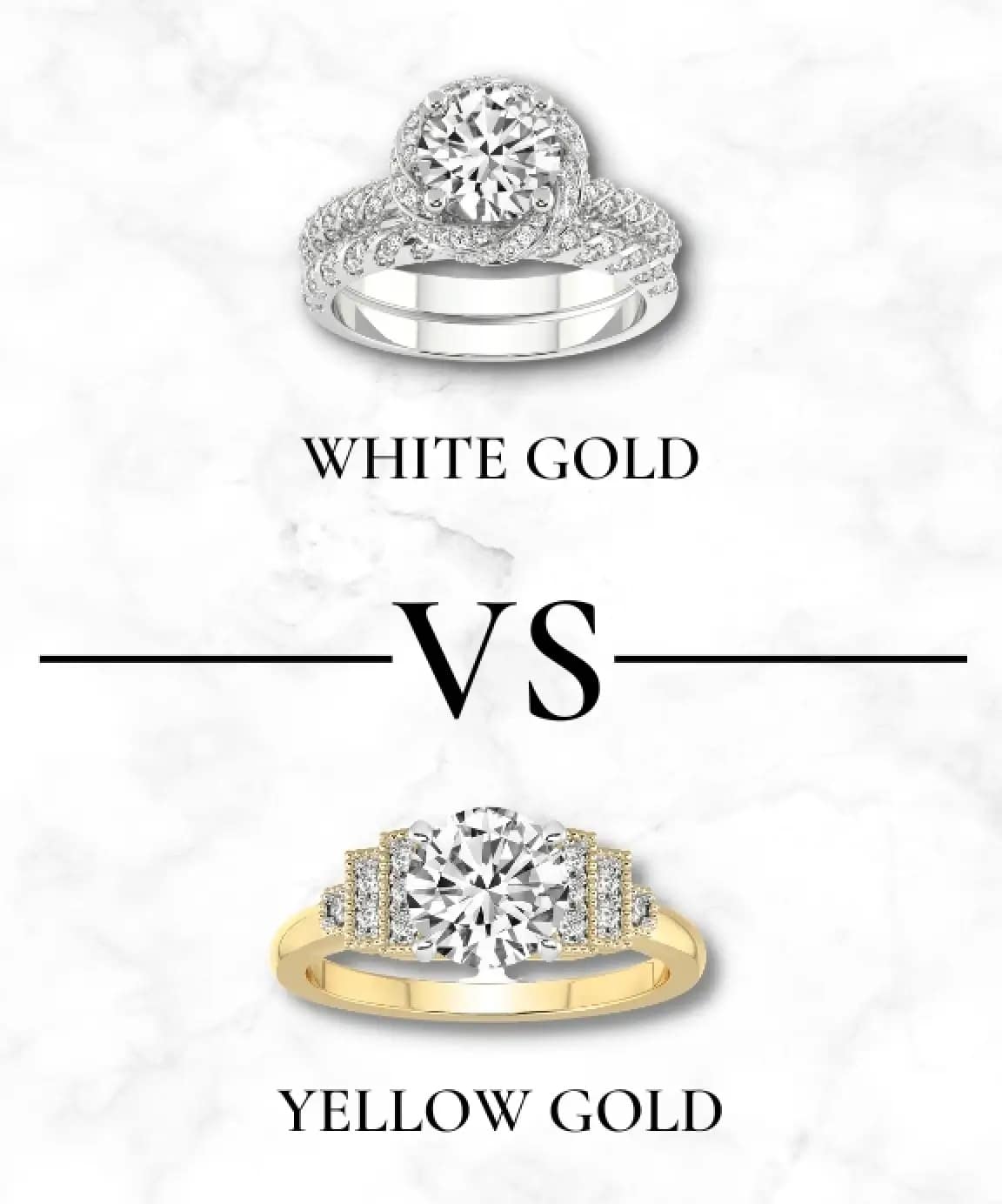When choosing jewelry, deciding between white gold and yellow gold is pivotal, influencing aesthetics and durability. This comprehensive guide delves into their differences, advantages, and future trends to assist you in making an informed choice.
Understanding the Basics
Gold, in its pure form, is a soft, yellow metal. To enhance its strength and alter its color, it’s alloyed with other metals.
- Yellow Gold: Combines pure gold with metals like copper and zinc, retaining its classic warm hue.
- White Gold: Mixes gold with white metals such as nickel, palladium, or silver, resulting in a silvery appearance. It’s often coated with rhodium to enhance its whiteness and durability.
Key Differences
- Color and Appearance:
- Yellow Gold: Exudes a timeless, warm glow, complementing vintage and traditional designs.
- White Gold: Offers a sleek, modern look, often preferred in contemporary jewelry settings.
- Durability and Maintenance:
- Yellow Gold: More malleable and may scratch easily; however, it’s easier to polish and repair.
- White Gold: Harder due to alloying metals; requires periodic rhodium plating to maintain its luster.
- Hypoallergenic Properties:
- Yellow Gold: Generally hypoallergenic, especially in higher purities.
- White Gold May cause allergic reactions in individuals sensitive to nickel; opting for nickel-free alloys can mitigate this.
- Cost Considerations:
- Both types are priced similarly when of the same karat. However, white gold might be slightly more expensive due to the rhodium plating process.
Choosing Based on Skin Tone
- Warm Undertones: Yellow gold enhances peachy or golden skin tones.
- Cool Undertones: White gold complements pinkish or rosy skin tones.
- Neutral Undertones: Both metals are flattering; personal preference can guide the choice.
Future Trends and Predictions
The jewelry industry is witnessing a blend of tradition and modernity:
- Sustainable Practices: There’s a growing demand for ethically sourced and recycled gold, influencing both yellow and white gold markets.
- Design Innovations: Combining yellow and white gold in a single piece is gaining popularity, offering versatile and unique designs.
- Technological Advancements: Emerging alloying techniques may produce gold with enhanced durability and novel colors, expanding consumer choices.
Conclusion
Your choice between white gold and yellow gold should align with your style, skin tone, and maintenance preferences. Both metals offer unique advantages, ensuring that your selection will result in a cherished piece of jewelry.
For a visual comparison and more insights, refer to the following image:
Note: Always consult with a reputable jeweler to explore the best options tailored to your needs
